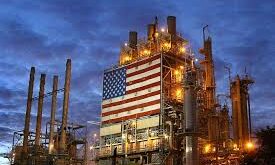The world we live in today is very different to 10 years ago. What change will the coming decade bring? I asked Wood Mackenzie`s analysts from across our business – energy transition. power and renewables. macro oils. petrochemicals. gas. upstream. corporate. economics. metals and mining – to imagine what 2030 could look like.
Here’s what they see.
Technology – a brave new world
The world is decarbonizing. the nascent technologies of 2020 are now mainstream. Energy storage. at scale. is crucial in balancing a power market dominated by intermittent solar and wind. New generation cobalt-light. high-nickel lithium-ion batteries underpin an industrialized electric vehicle (EV) market in which China leads manufacturing and dominates the supply chain. One in four light vehicle sales globally is an EV while autonomous EVs are starting to take off in the mass market.
‘Free’ surplus renewable generation supports green hydrogen pilot projects. threatening fossil fuels’ stranglehold on energy-intensive industries. including steel and cement. Hydrogen is emerging as a potentially viable solution for residential and commercial space heating. Industrial-scale carbon capture and storage opens the prospect of prolonging fossil fuels’ life in markets where there’s access to suitable spent oil or gas reservoirs. Among emerging technology bets are bio-methane (net-zero emissions gas). algae (low-emissions biofuels) and biotechnological advances in the food chain that disrupt agriculture.
Smart cities: an electrifying experience
Cities in China. California. Japan and Europe lead the way on decarbonization and how we consume energy – a sneak peek into what a 2050 world looks like. In these cities. smart homes give us complete control over energy consumption and efficiency. Smart systems connect wirelessly to appliances and control domestic ambience – cooking. heating. lighting – cost effectively. choosing when to buy power from the grid. sell it or store it.
The power systems in these cities are decentralized – distributed generation dominated by renewables. supported by grid-edge technologies. such as energy storage and EV charging. Gas is still in the generation mix in a back-up capacity. Universally. massive investment is being made in ‘last-mile’ distribution to meet steeply rising power demand.
New energy and fossil fuel resilience
Signs of sweeping change are evident. though the energy mix globally hasn’t changed much. Fossil fuels. even coal. are proving resilient. Indeed. they remain the only option in many developing economies to readily meet rising energy demand. But zero- and low-carbon energy in power and other sectors are in the ascendancy as costs fall.
Efficiency gains and policy focused on consumption – everything from carbon taxes on fossil-fuel-based fuels and goods to subsidized public transport – are dampening fossil fuel demand. The decline in coal demand is accelerating. electrification has brought global oil demand growth close to peak. with the developed world already in decline. Gas demand is the most resilient among fossil fuels. with LNG exceeding piped export volumes. Gas growth. though. is coming under threat from new technologies like hydrogen.
Oil and gas investment. ESG and finance
Oil and gas products still support the global economy. But the industry is different: upstream. especially in the Middle East and Russia. is low cost. low risk. lower carbon – and low employment. Investment focuses on brownfields. Digitalization. artificial intelligence. nanotechnology and supercomputing are enhancing recovery. maybe even discovery – though exploration has largely ceased. Environmental pressures have intensified. severely limiting finance availability for oil. and perhaps gas. Those banks still prepared to lend insist on ever higher hurdle rates and faster payback.
With the Permian now ex-growth. underinvestment in global upstream and higher finance costs increase the risk of oil price spikes. Downstream is closing capacity in OECD countries as demand declines. Refining assets are increasingly concentrated in growth markets like Asia. in growth segments such as petchems and on low-emissions refined products that incorporate biofuels.
Corporate landscape
The industry has consolidated to cut costs so there are fewer players. Strategies have shifted. and the lines have blurred between oil and gas and utilities. The Majors. other large IOCs and a few NOCs have morphed into energy providers. taking power ‘global’. Power – generation. grid edge. even retail customers – is a significant. fast-growing core business built by acquisitions as well as organic investment. Some have even taken the plunge into the supply chains of cobalt. lithium. nickel and copper – the metals of energy’s future.
Legacy upstream and downstream still dominate in most integrated companies’ portfolios. but as a shrinking cash cow. with investment limited. A few pure oil and gas low-cost Middle East NOCs are thriving. Many others. IOCs and NOCs. struggle to adapt. Value-driven niche players. perhaps privately backed. make hay for a time as the wider industry churns assets and positions towards low carbon.
 Iran Energy News Oil, Gas, Petrochemical and Energy Field Specialized Channel
Iran Energy News Oil, Gas, Petrochemical and Energy Field Specialized Channel




